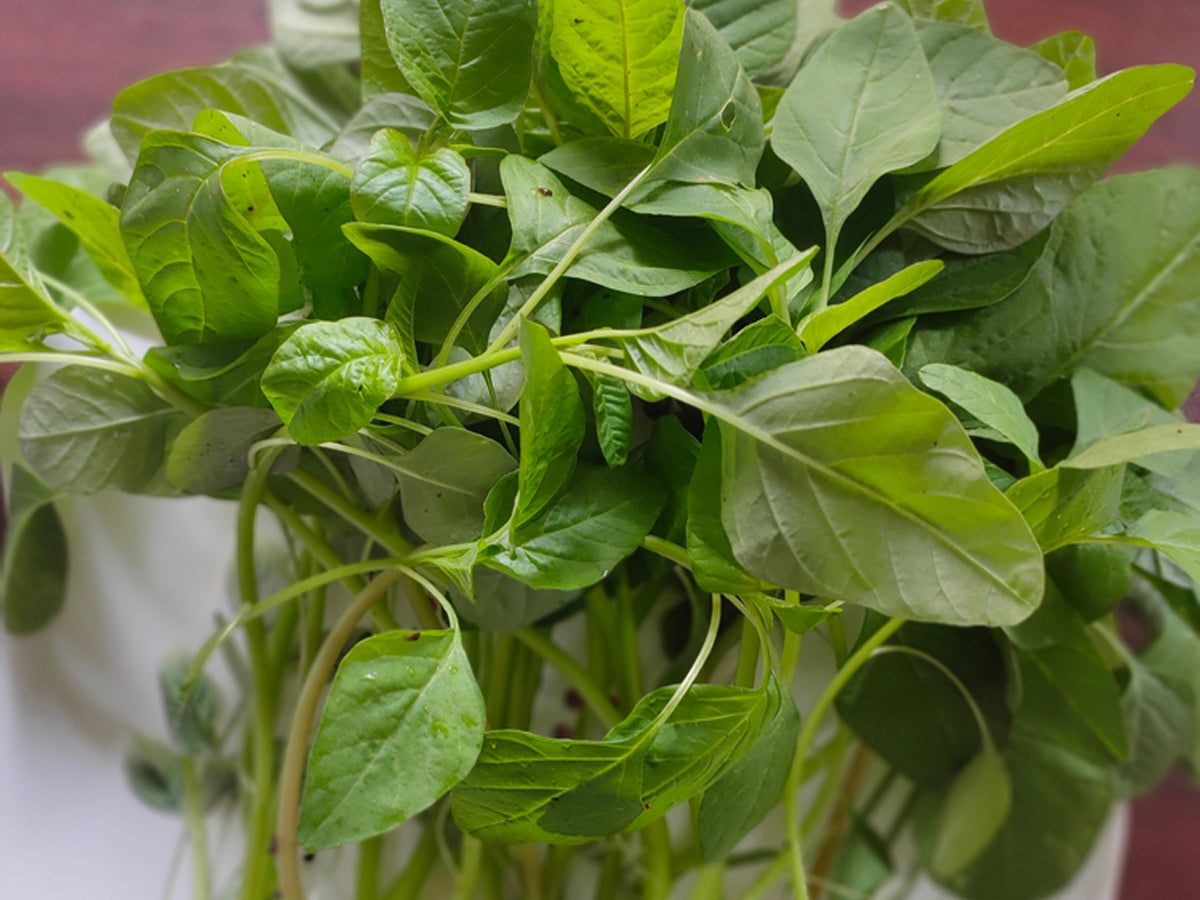How to Grow
Step-by-step Guide on How to Grow Thotakura Amarnath Plant: Benefits, Uses & Care Tips
I may look exotic,
But I am available worldwide
I love hot summers.’
But winters make me cry
I have medicinal properties,
And often considered a superfood.
Guess who I am?
Confused? I am thotakura. But you may know me as amaranth, kuppacheera, shravaani maath, khada saga, koora thampala, etc. I have many names and varieties, yet I have similar nutrition content.
Thotakura flowers look exotic and are available in different shades. The diuretic and purgative leaves help to treat gonorrhoea, haemorrhoids, inflammations, abscess, etc.
What's more?
The leafy vegetables love summer and can grow easily. Heart-healthy food can easily be grown in your garden. In this article, we will talk about everything you need to know about:
- Facts about thotakura
- How to grow thotakura
- Care tips for thotakura
- Benefits and uses of thotakura
Let's get started.
Facts About Thotakura
- Kuppacheera in Malayalam or thotakura in Telegu is commonly known worldwide as “amaranthus viridis”.
- Thotakura is consumed as an everyday veggie in South India.
- The vigorous annual herb is used as a medicinal herb known as “tanduliya”.
- A collection of amaranthus, known as amaranth, is a cosmopolitan collection of herbs with around sixty species.
- There are four species available in Eastern Asia: amaranthus blitum, amaranthus tricolour, Amaranthus cruentus, and amaranthus dubious.
- The leaves of Amaranthus are known as thotakura and are locally known as thotakura pappu and are traditionally prepared with dal.
- The green leafy vegetable contains vitamins K, C, A, and B6, folate, riboflavin, phosphorous, zinc, copper, iron, magnesium, and several other minerals.
How To Grow Thotakura At Home?
Amaranthus is both edible and ornamental. The short-lived vulnerable plant is a popular summer bedding that attracts crowds with its variant colours with tassels like purple, crimson, or green flowers. In warm countries, amaranthus can be a great plant with extensive growth.
The plant's seeds are a bird’s treat; growing thotakura will help you grow bird food. Here, we have a step-by-step guide on how to grow the plant in a pot.
Soil Preparation
Prepare a potting mix with garden soil, cow manure, and peat moss.
Sow the Seeds
After two weeks, add the potting mix to your container. Spread the amaranth seeds evenly around the soil.
Add Nitrogen
Make sure your plant receives enough nitrogen.
Ready to Harvest
It will take only three weeks for thotakora to grow into a fresh leafy plant. When you harvest the plant, cut from one to inches above to keep the roots intact.
Add Neem Oil
If insects infest your plant, add neem oil to eliminate them.
Although the plant looks exotic, the sun-loving annual plant is easy to grow.
Care Tips For Thotakura
Now that you know how to grow thotakura in your garden, here’s how you need to take care of it.
Soil
The amaranth plant grows properly on average and enough even in poor soils. If you want steady and quick growth, always use a potting mix of garden soil, cow dung, and peat moss. Remember that a rich soil mixture might obstruct seed production and flowering.
Sunlight
For the best growth of thotakura, full-time sunlight is essential. In case of warm temperatures in south India, little shade can help it strive. However, it is vital to provide sunlight to a thotakura plant for at least six hours.
Water
The amaranth plant requires average water content. One inch of water is enough for the plant to grow properly. If you overwater the plant, you might rot the roots or increase the risk of fungal diseases.
Temperature
The leafy vegetable can thrive under heat and grow even in unusually warm temperatures. It grows well between 21 and 29 degrees Celsius.
Fertiliser
While cow dung and neem cake fertilisers are the top choices for pot mixes in amaranth, the plant also grows well without any of them. It is important to note that excessive nitrogen might damage the plants, which wouldn't result in a suitable harvest.
Benefits And Uses of Thotakura
The nutrient-rich leafy vegetables separate it from other green vegetables. Here are some of the health benefits and uses of thotakura.
Stores Nutrients
Amaranth leaves are filled with antioxidants and essential phytonutrients. It helps reduce the inflammation in the body and provides an extra boost of nutrition for our health.
Low Calorie
A hundred grams of amaranth leaves carry only twenty-three calories. The slight traces of fat and zero cholesterol makes them a healthy option and an added advantage to your weight loss diet.
Rich in Fibre
The thotakura leaves have several benefits and are rich in insoluble and soluble fibre. Fibre helps us lose weight and keeps our hearts healthy by lowering blood cholesterol levels. The high fibre and protein content helps promote weight loss and reduce appetite.
Promotes RBC Formation
Iron helps produce red blood cells, an essential part of cellular metabolism. Amaranth leaves provide a powerful source of vitamin C that powers the maximum utilisation of iron in the blood. Taking amaranth leaves with lemon can work like magic.
Boosts Immunity
In the times of COVID, immunity has been everyone's top priority. Therefore, 100 grams of amaranth leaves rich in Vitamin C will meet your daily quota. The water-soluble vitamin helps fight infections and promotes quick healing. The plant reduces free radicals, which are responsible for forming cancer.
Rich in Vitamin K
Amaranth has the highest concentration of vitamin K of any green leafy vegetable. The vitamin promotes good bone health and plays a crucial role in blood clotting. It keeps your bone mass strong and promotes osteoblastic activity. The leaf is beneficial for people who suffer from Alzheimer's disease.
Rich in Vitamin A
The thotakura leaves can provide 97% of your daily antioxidant vitamin needs. It's rich in zeaxanthin, beta-carotene, and lutein, which provide an added protective layer against free radicals caused by oxidative stress. Vitamin A promotes good vision and healthy skin.
Thotakura is Gluten-free
Amaranth plant seeds are used as grains and can be ground to make flour. It is a protein-rich flour that is 100% gluten-free and amazingly beneficial for anyone with gluten intolerance.
Rich in Calcium
The leaves of the amaranth plant are rich in calcium and are helpful for people suffering from osteoporosis and other health-related issues that are the cause of calcium deficiency.
Reduces Bad Cholesterol
The leaves are famous for lowering cholesterol which is responsible for several cardiac problems.
Thotakura Leaves Contain Lysine
Lysine is an important amino acid that is present in the leaves. It helps absorb calcium and produce energy. It helps promote healthy skin and hair growth. Anyone who suffers from hair loss will benefit from consuming amaranth leaves.
Conclusion
Amaranth or thotakura is a superfood considered a “powerhouse of nutrients." Not only are the leaves easy to prepare, but thotakura curry, thotakura dal, and thotakura fries are also extremely delicious, making them popular in Asia. Rich in minerals and vitamins and easy to grow, is there anything better to grow at home than thotakura? Grow them in your garden and include them in your daily diet.
FAQs on How to Grow Thotakura
-
How many days does amaranthus take to grow?
The amaranth or thotakura seeds usually take ten to fifteen days to germinate and about three to five weeks to grow properly.
-
Where does amaranth grow best?
Amaranth requires average soil and direct sunlight to thrive. However, it is a frost-tender plant, which makes it a warm-temperature plant.
-
What are the uses of thotakura leaves?
Thotakura leaves are edible and used to prepare dal. The plant acts like medicine to treat swelling in the throat or mouth, ulcers, diarrhoea, and high cholesterol.
-
How much protein is present in thotakura?
246 grams of cooked amaranth contain 9.3 grams of protein and 251 calories. The plant is widely consumed in several parts of the world and is known by different names.
-
Is amaranth good for the heart?
Amaranth has high fibre, which makes it a great food to prevent heart disease. An animal study shows that amaranth seeds help to decrease LDL and blood triglycerides. A cup of 246 grams of cooked amaranth contains 5 grams of fibre.



